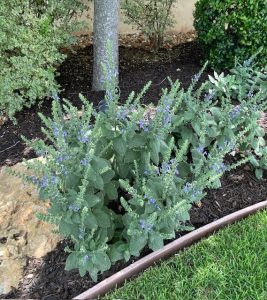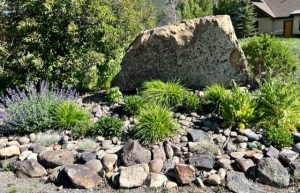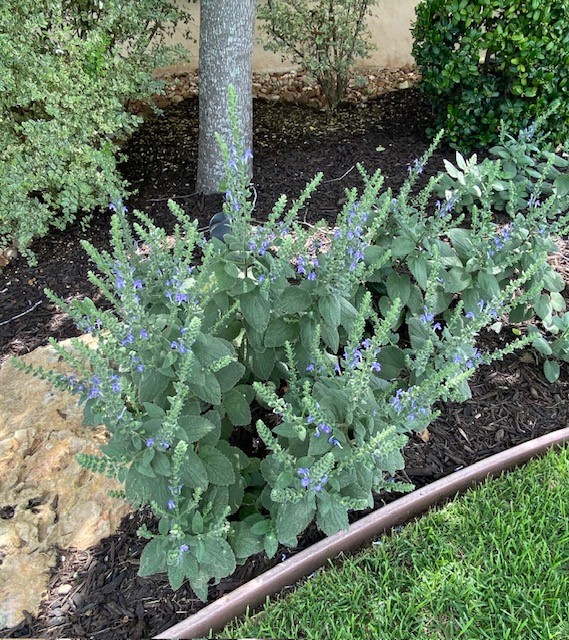By Bill Swantner, Bexar County Master Gardener
July 2023

It’s July which means that the summer heat and scarcity of rain has set in. For gardeners, that means that it is time to apply much.
What Is Mulch?
Mulch is a protective covering (such as sawdust, compost, or paper) spread or left on the ground to reduce evaporation, maintain even soil temperature, prevent, control and minimize erosion and weeds, enrich the soil, or keep fruit (such as strawberries) clean.
Mulch can also be used to control flooding, add color to a landscape, and provide nutrients for plants.
Mulch comes from two primary sources: inorganic and organic. Generally speaking, inorganic mulches do not break down and include rock, glass, landscape fabric, rubber mulch, and plastic mulch.
Organic mulches break down and include wood chips/bark, shredded trees and bushes, straw or hay, or other similar material. As organic mulches break down they add valuable nutrients to the microbes in the soil. The microbes feed on the decaying mulches and excrete nutrients in a form that plants can absorb. Inorganic mulches and some organic mulches like chopped wood, bark, or pecan shells might not be as effective in controlling erosion because they do not absorb water.

Mulches come in various colors and can be used to enhance a landscape. For example, rocks can be used as a mulch and come in a multitude of colors. Some shredded wood mulches are dyed red, brown, or black. The color of the organic mulch depends on the wood source- cedar, oak, mixed hardwood, pine bark, and pecan shells.
No matter how well any soil has been amended, the heat from the sun and the hot winds dry out the soil. As clay soil dries out it contracts- removing air space for a plant’s roots and making it more difficult for the roots of plants to absorb water and nutrients. Because of the nature of our region’s clay soil, contracted soil is also difficult to rehydrate. A 2-3” layer of compost will act as a buffer for soil.
Related to protecting the soil from heat and wind is the soil temperature. The root hairs of plants are sensitive to heat and cold. As the soil warms up, the root hairs of plants dehydrate and stop absorbing water and nutrients. Again, a 2-3” layer of mulch will keep moisture in the upper layers of the soil so that the root hairs can continue to provide the nutrients necessary for plant maintenance and growth.

Mulch will not stop weeds from growing. In fact, weeds will grow in a planting medium (soil or mulch) and wherever there is sunlight. But, since mulch is much more porous than compact soil, the weeds are much easier to pull out from the ground.
In times of downpours, water erodes soil, even when it is compacted. Mulch can stop soil erosion by absorbing the water instead of letting the water wash away on unprotected soil. But, to help control erosion, the mulch needs to be double-shredded.
Mulches are necessary to protect soil health. In time, mulch breaks down and provides nutrients to keep your garden healthy. Since there are so many varieties, mulch can easily be incorporated into any landscape to enhance its beauty.
All photos by Michelle Hobbs

